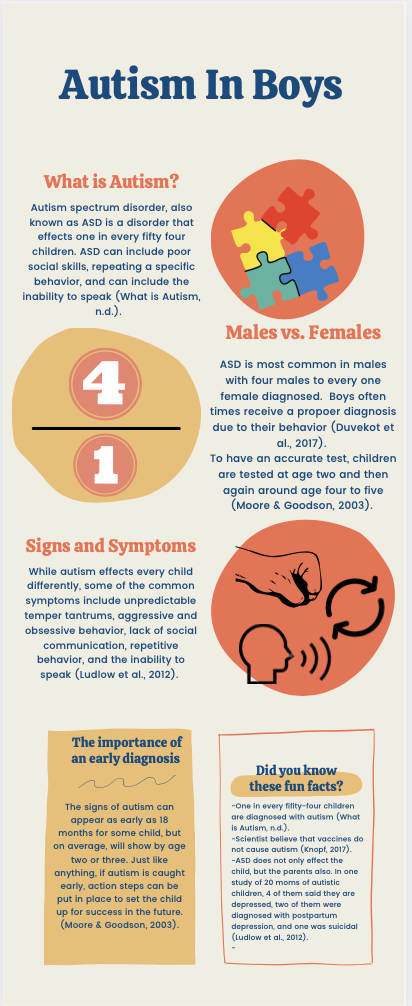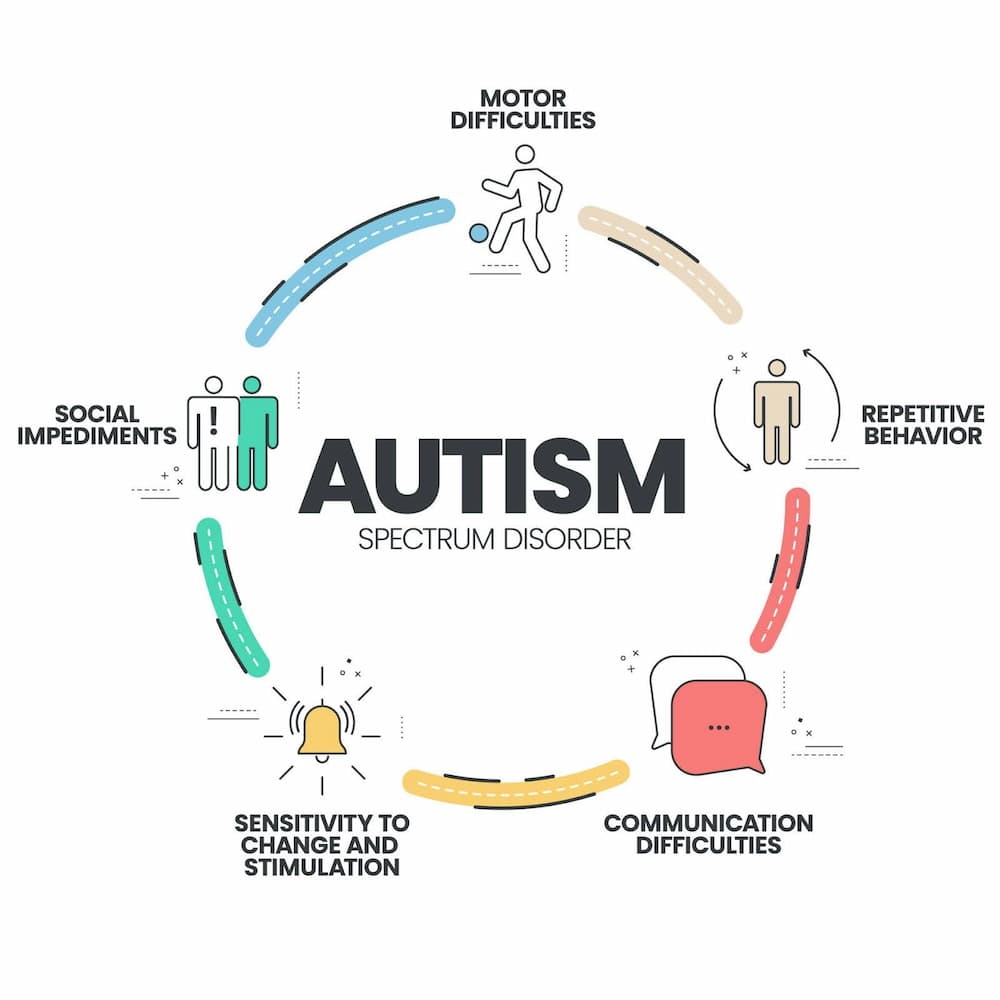The role of structured routines help children with autism—according to an Autism Therapist
The role of structured routines help children with autism—according to an Autism Therapist
Blog Article
Advertising Inclusivity: Exactly How to Create Encouraging Settings for Those With Behavioral Autism
Creating encouraging atmospheres for individuals with behavior autism is vital for fostering inclusivity. You could question how understanding vital features and obstacles can lead the way for effective strategies. By concentrating on compassion and interaction, you can make a substantial influence. But what certain steps can you take to assure these people grow in different setups? Allow's check out the approaches that can cause significant adjustment.
Understanding Behavior Autism: Key Features and Difficulties
Recognizing behavior autism includes recognizing its crucial attributes and the difficulties it offers. People with autism typically display troubles in social communication, communication, and repeated behaviors.

Sustaining a person with behavior autism suggests being person and versatile. You'll require to develop an atmosphere that lessens tension and promotes comfort.
The Function of Empathy in Supporting Individuals With Autism
Empathy plays a vital duty in supporting people with autism by assisting you recognize their distinct viewpoints. By practicing energetic listening methods, you can build emotional links that foster depend on and communication - Autism Spectrum Therapies. This understanding not just enhances your connection however likewise creates a much more helpful atmosphere for them
Comprehending Unique Point Of Views
When you consider the one-of-a-kind viewpoints of people with autism, it ends up being clear exactly how crucial empathy is in offering effective support. Your capacity to understand enables you to create an environment where they really feel risk-free, valued, and comprehended. This supportive atmosphere empowers people with autism to reveal themselves, eventually enhancing their health and development.

Energetic Listening Techniques
Energetic paying attention methods play a vital role in sustaining individuals with autism, as they foster a much deeper connection and understanding. When you participate in active listening, you show that you value their ideas and feelings. Maintain eye contact, nod, and utilize spoken affirmations to signal your listening. Reword what they say to confirm your understanding, and ask open-ended questions to encourage more expression. Avoid interrupting, allowing them to verbalize their factors fully. Be mindful of your body language; it must be open and welcoming. By practicing these methods, you create a risk-free area where individuals really feel listened to and appreciated, ultimately enhancing their interaction and emotional health. Empathy radiates with when you actively listen, reinforcing your relationship with them.
Structure Emotional Links
Developing a supportive environment via active paying attention naturally brings about developing emotional connections with individuals on the autism range. When you really involve, you're not simply hearing their words; you're recognizing their sensations. This compassion promotes trust fund, enabling them to reveal themselves freely. Usage nonverbal hints, like eye contact and nodding, to reveal you exist and spent in their experiences.

Efficient Communication Methods for Inclusivity
Efficient interaction strategies play a crucial function in cultivating inclusivity for people with behavior autism. Begin by utilizing clear, simple language that's understandable. Avoid idioms or abstract phrases; they can be complex. Rather, be particular and direct about what you suggest.
Nonverbal signs are equally important. Take note of your body language, faces, and tone of voice, as these can share more than words. Keep eye call and usage gestures to boost understanding.
Furthermore, be person and give individuals time to process information. Encourage them to express their sensations and thoughts, showing that their input is valued.
Energetic listening is essential; repeat or reword what they've said to validate understanding. Lastly, adapt your communication approaches based upon specific preferences, whether it's via visual aids, written instructions, or various other tools. This personal touch strengthens incorporation and helps build purposeful connections.
Customizing Support Systems in Educational Setups
In educational setups, you'll wish to concentrate on Individualized Education and learning Program (IEPs) that satisfy each pupil's distinct requirements. Developing a sensory-friendly classroom layout can likewise enhance discovering by reducing distractions and promoting comfort. Together, these techniques can promote an environment where pupils with autism prosper.
Individualized Education And Learning Strategies
While steering through the intricacies of autism in educational settings, Individualized Education and learning Plans (IEPs) play a crucial function in customizing assistance systems to meet each pupil's unique requirements. It's essential to collaborate with educators, professionals, and your child to produce a comprehensive plan. Bear in mind, an effective IEP is not just a paper; it's a living device that adapts to your kid's advancing needs, ensuring they flourish in their educational atmosphere.
Sensory-Friendly Class Layout
Developing a sensory-friendly classroom can considerably improve like it the learning experience for pupils with autism. Usage soothing colors on wall surfaces and decoration to produce a relaxing atmosphere. By making these changes, you'll produce an environment where pupils with autism really feel a lot more supported and involved in their discovering journey.
Developing Inclusive Workplaces for Individuals With Autism
To foster a truly comprehensive workplace for people with autism, employers must identify the distinct strengths and obstacles these individuals bring. Beginning by promoting clear communication and supplying comprehensive job summaries that describe expectations. This assists individuals recognize their functions better and minimizes anxiety.
Think about executing flexible job plans, such as remote job or changed hours, to suit different sensory needs and individual choices. Training your personnel on autism awareness is important; it can improve compassion and promote an encouraging atmosphere.
Producing peaceful spaces where employees can recharge during demanding minutes can likewise make a considerable difference. Encourage using assistive innovations that assist improve tasks and enhance efficiency.
Ultimately, valuing variety will certainly not only benefit individuals with autism yet will certainly also improve the entire team, resulting in a more innovative best site and dynamic office. Accept these techniques to grow an atmosphere where every person can prosper.
Motivating Social Interaction and Area Interaction
Urging social interaction and area interaction is vital for people with autism, as it assists construct self-confidence and promotes significant connections. To create a helpful environment, start by providing opportunities for people to attach with others in a comfy setup. Organize group tasks that satisfy different rate of interests, such as art classes, sporting activities, or social work jobs.
You can also facilitate smaller sized, structured celebrations where every person can share their experiences and thoughts. Urge open interaction by modeling respectful listening and empathy. Developing peer mentorship programs can assist create bonds and provide advice.
Include families and neighborhood companies to broaden the assistance network and advertise inclusive occasions. Keep in mind, the key is to create risk-free spaces where people with autism feel valued and understood. By cultivating these connections, you'll aid them prosper socially and develop a feeling of belonging within the neighborhood.
Resources and Tools for Structure Supportive Atmospheres
While structure helpful settings for individuals with autism might seem difficult, several resources and devices can make the process much easier and more reliable. First, take into consideration utilizing aesthetic assistances like routines or social tales to help individuals recognize their everyday regimens and social situations. Apps created for interaction, such as AAC (Alternate and augmentative Interaction) devices, can additionally enhance interaction.
In addition, training programs for team and volunteers on autism recognition can advertise compassion and understanding in your area. Explore neighborhood organizations that offer workshops or resources customized for supporting individuals with autism.
Creating sensory-friendly areas with soothing elements-- like soft lights and peaceful areas-- can profit those who could come to be overwhelmed. Ultimately, establishing links with regional support teams can give ongoing guidance and feedback, aiding you improve your technique and assurance inclusivity for all.
Frequently Asked Inquiries
Exactly How Can I Educate Others Concerning Behavioral Autism Properly?
To inform others about behavior autism successfully, share personal tales, supply clear resources, and urge seminars - Autism Spectrum Therapies. Usage relatable instances and highlight the significance of recognizing different perspectives to promote empathy and recognition
What Are Common Misconceptions Concerning Autism That Need Addressing?
You may think autism just affects interaction skills, however that's simply Discover More one element. Several believe it's only a childhood problem, when actually, it covers across any ages and shows up in a different way for each and every individual.
Just How Can I Advocate for Autism Understanding in My Community?
You can promote for autism recognition by organizing neighborhood occasions, sharing helpful sources, and collaborating with regional companies. Use social networks to get the word out, and encourage open conversations to cultivate understanding and acceptance.
Are There Details Sensory-Friendly Spaces for Individuals With Autism?
Yes, lots of areas offer sensory-friendly areas, like silent rooms in libraries, specialized play locations, or marked hours at museums. You can check out neighborhood resources and advocate for even more comprehensive spaces to support people needing them.
What Role Do Family Members Play in Supporting People With Autism?
Household participants play a vital function in sustaining people with autism. You can give encouragement, understanding, and patience. By actively taking part in their lives, you help build confidence and foster freedom, developing a supporting setting.
Developing encouraging settings for people with behavioral autism is vital for fostering inclusivity.Producing a helpful setting with active listening naturally leads to developing emotional links with people on the autism spectrum. Developing Inclusive Workplaces for People With Autism.
To promote an absolutely comprehensive office for individuals with autism, employers have to identify the special staminas and challenges these people bring. Keep in mind, the key is to develop risk-free spaces where people with autism feel valued and understood.
Report this page